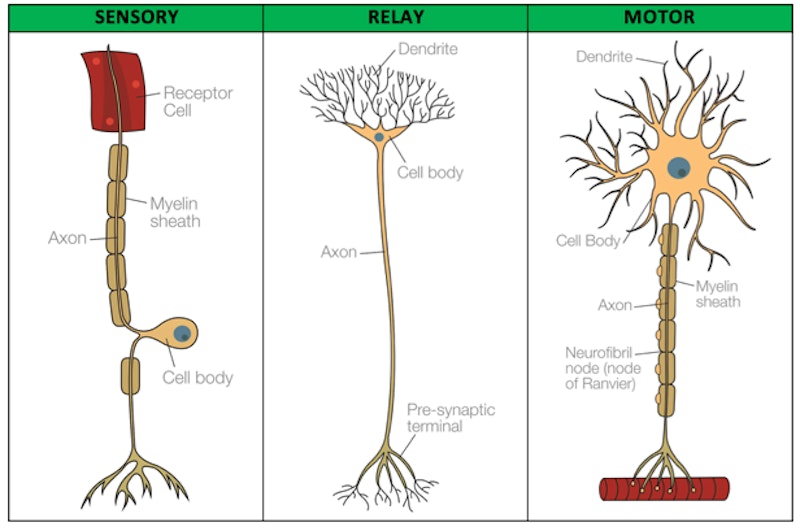Study Notes
Biopsychology: Sensory, Relay and Motor Neurons
- Level:
- A-Level
- Board:
- AQA, Edexcel, OCR, Eduqas
Last updated 23 Sept 2022
There are three main types of neurons, including: sensory, relay and motor. Each of these neurons has a different function, depending on its location in the body and its role within the nervous system.
Note: All three types of neuron consist of similar parts, however their structure, location and function are different and this is what you need be aware of.
Sensory neurons are found in receptors such as the eyes, ears, tongue and skin, and carry nerve impulses to the spinal cord and brain. When these nerve impulses reach the brain, they are translated into ‘sensations’, such as vision, hearing, taste and touch. However, not all sensory neurons reach the brain, as some neurons stop at the spinal cord, allowing for quick reflex actions.
Relay neurons are found between sensory input and motor output/response. Relay neurons are found in the brain and spinal cord and allow sensory and motor neurons to communicate.
Motor neurons are found in the central nervous system (CNS) and control muscle movements. When motor neurons are stimulated they release neurotransmitters that bind to the receptors on muscles to trigger a response, which lead to movement.

As you can see from the diagrams above, all three neurons consist of similar parts.
The dendrites receive signals from other neurons or from sensory receptor cells. The dendrites are typically connected to the cell body, which is often referred to as the ‘control centre’ of the neuron, as it’s contains the nucleus.
The axon is a long slender fibre that carries nerve impulses, in the form of an electrical signal known as action potential, away from the cell body towards the axon terminals, where the neuron ends. Most axons are surrounded by a myelin sheath (except for relay neurons) which insulates the axon so that the electrical impulses travel faster along the axon.
The axon terminal connects the neuron to other neurons (or directly to organs), using a process called synaptic transmission.
You might also like
Explaining OCD
Study Notes
The Problem with fMRI
8th February 2017
Weekly Revision Schedule for IB Psychology
Exam Support